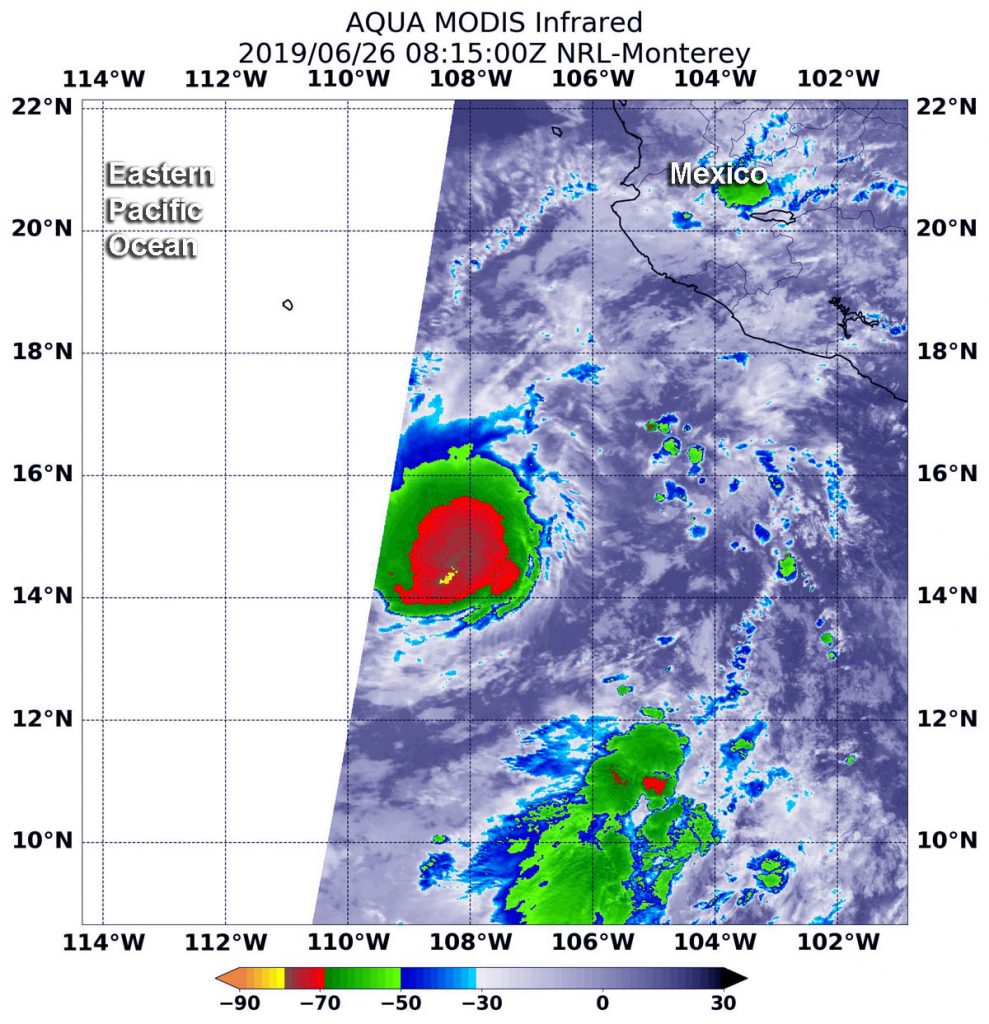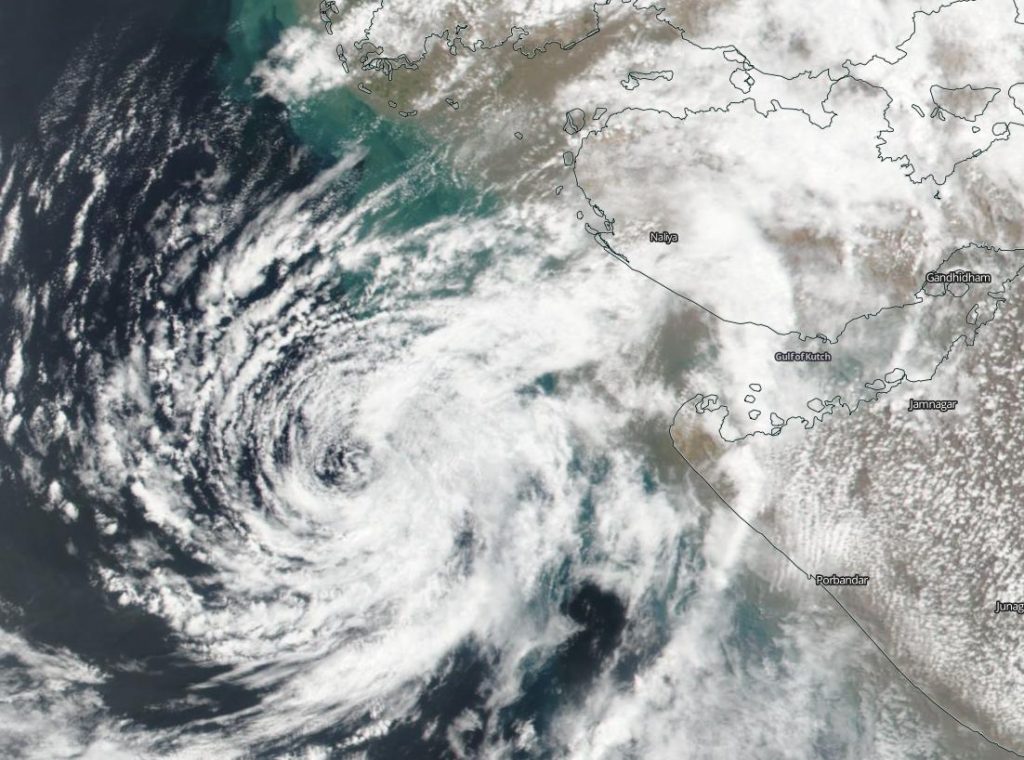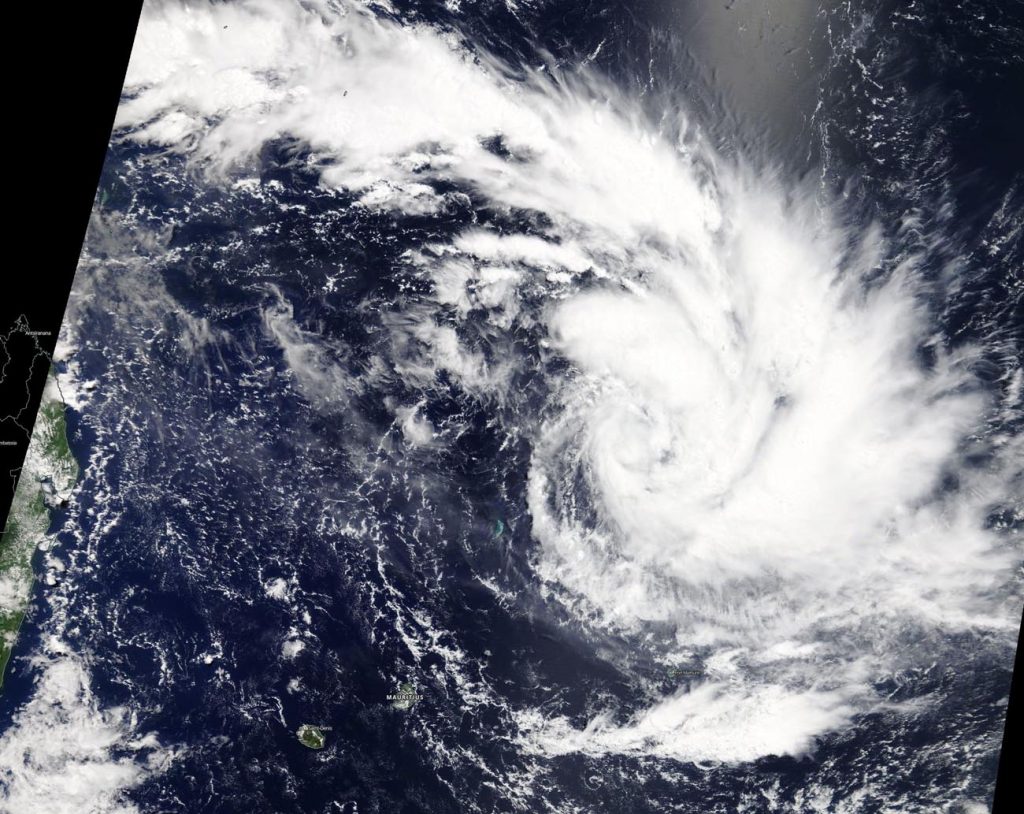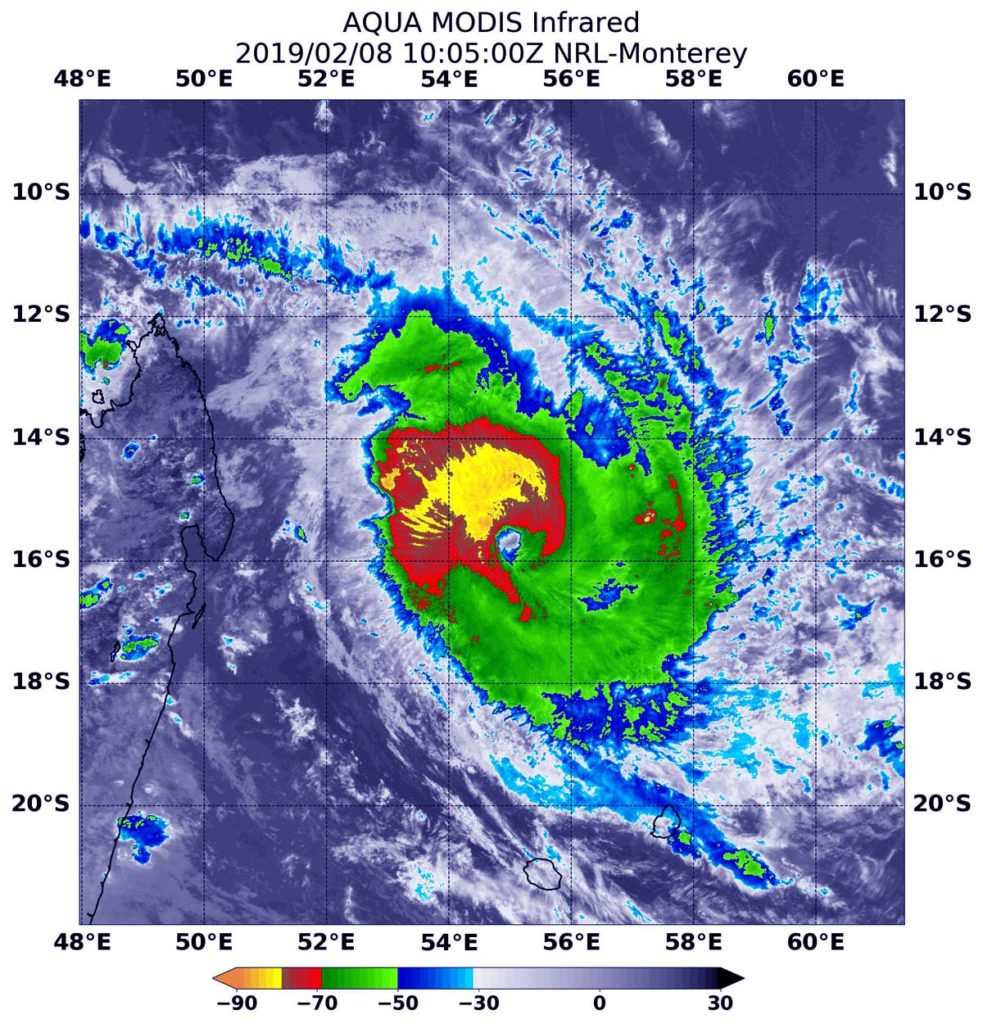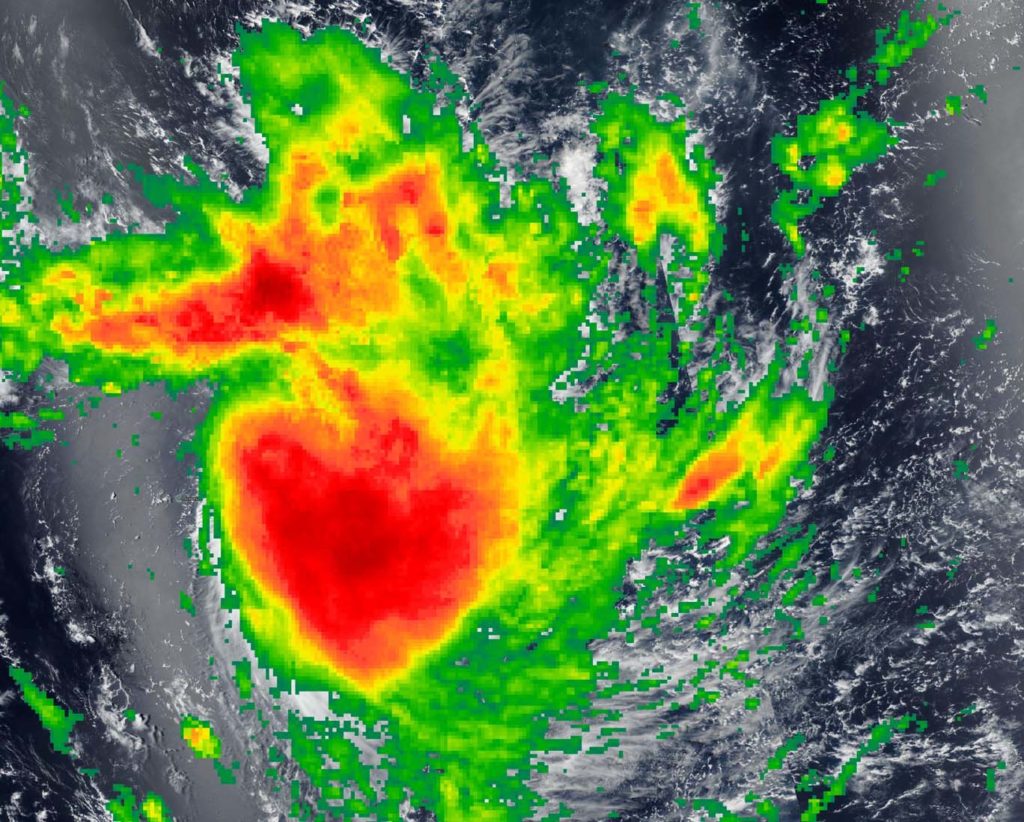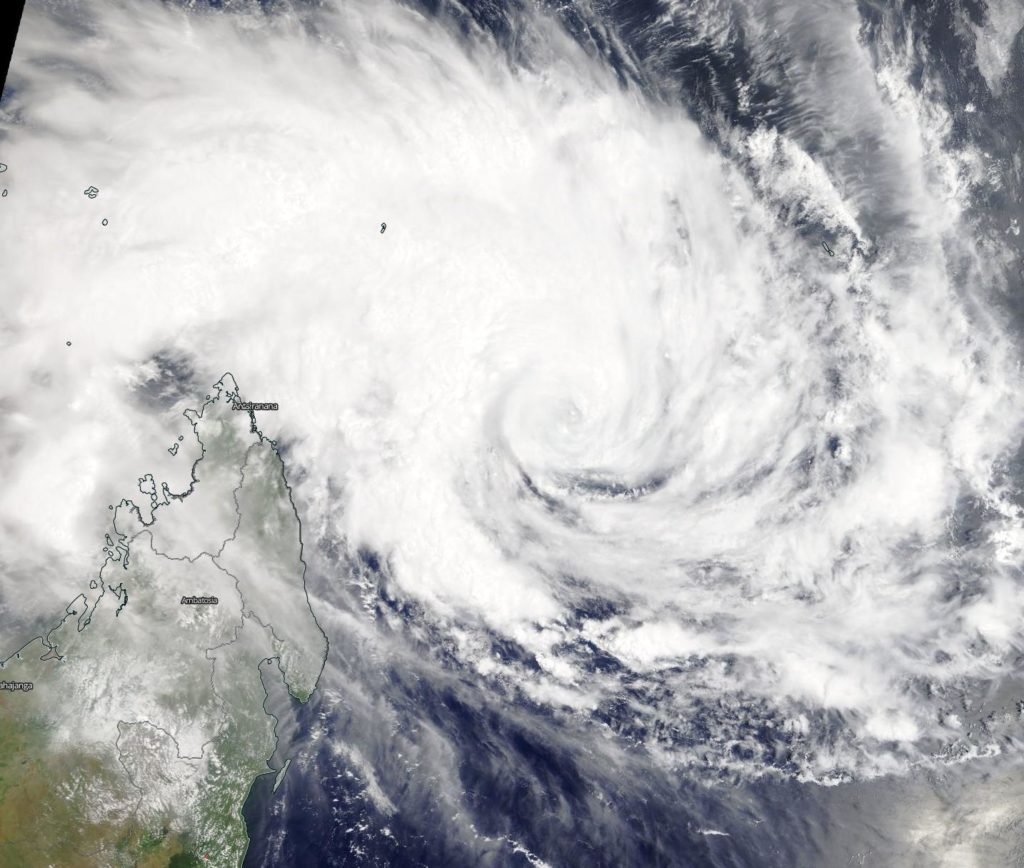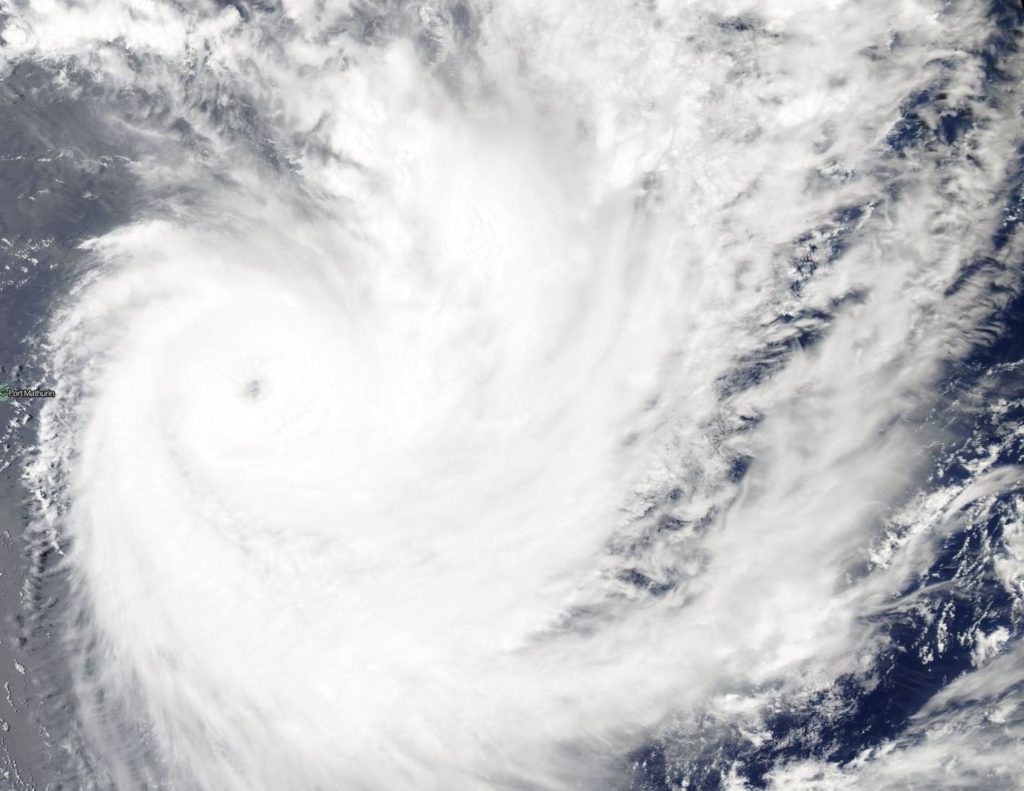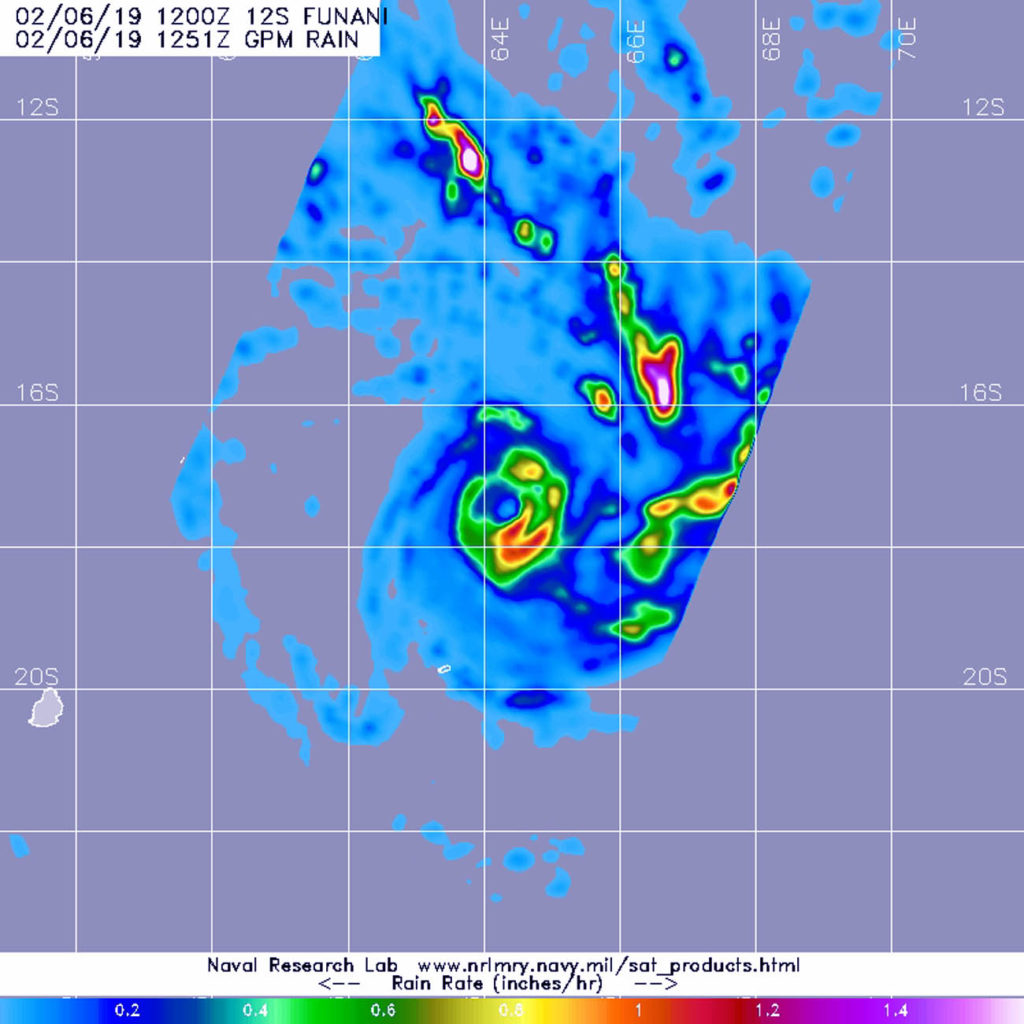June 27, 2019 – NASA’s Terra Satellite Eyes Tropical Storm Alvin
Visible imagery from NASA’s Terra satellite showed Tropical Storm Alvin had organized and strengthened into a strong tropical storm, just over 500 miles from Mexico’s Baja California peninsula.
On June 27, the Moderate Resolution Imaging Spectroradiometer or MODIS instrument aboard NASA’s Terra satellite provided a visible image of Alvin. Satellite imagery revealed that Alvin’s clouds appeared more organized than they did the previous day.
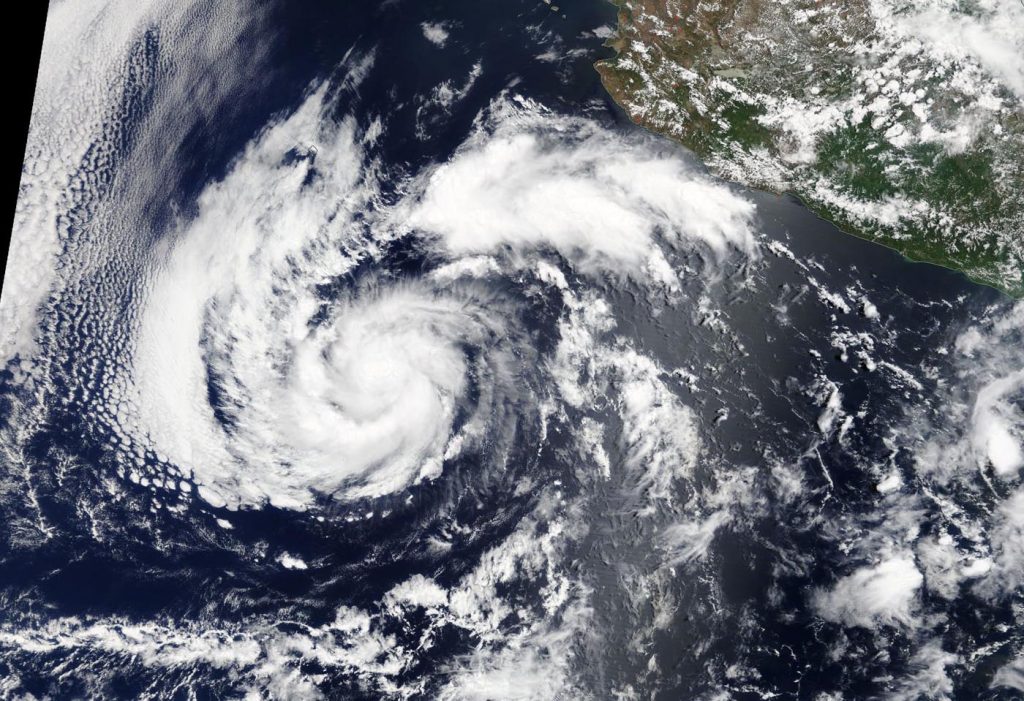
Recent microwave imagery also showed that Alvin’s “convective structure,” or the development and organization of thunderstorms around the low-level center) has improved during the morning of June 27. AT 6:57 a.m. EDT (1057 UTC). The Special Sensor Microwave/Imager (SSM/I) instrument aboard Defense Meteorological Satellite Program satellite showed a closed ring of convection (clouds and storms) around the mid-level center of the small tropical storm. Infrared satellite imagery revealed that Alvin has not changed significantly.
NOAA’s National Hurricane Center (NHC) reported at 11 a.m. EDT (1500 UTC), the center of Tropical Storm Alvin was located near latitude 15.8 degrees north and longitude 113.1 degrees west. That’s about 535 miles (855 km) south-southwest of the southern tip of Baja California.
Maximum sustained winds are near 60 mph (95 kph) with higher gusts. Alvin is moving toward the west-northwest near 14 mph (22 kph), and this general motion is expected to continue for the next day or so. The estimated minimum central pressure is 999 millibars (29.50 inches).
Some strengthening is possible during the next 24 hours before Alvin reaches cooler waters. Weakening is the expected to begin on Friday and the NHC said Alvin is forecast to become a remnant low on Saturday.
For updated forecasts, visit: www.nhc.noaa.gov
Rob Gutro
NASA’s Goddard Space Flight Center, Greenbelt, Md.

